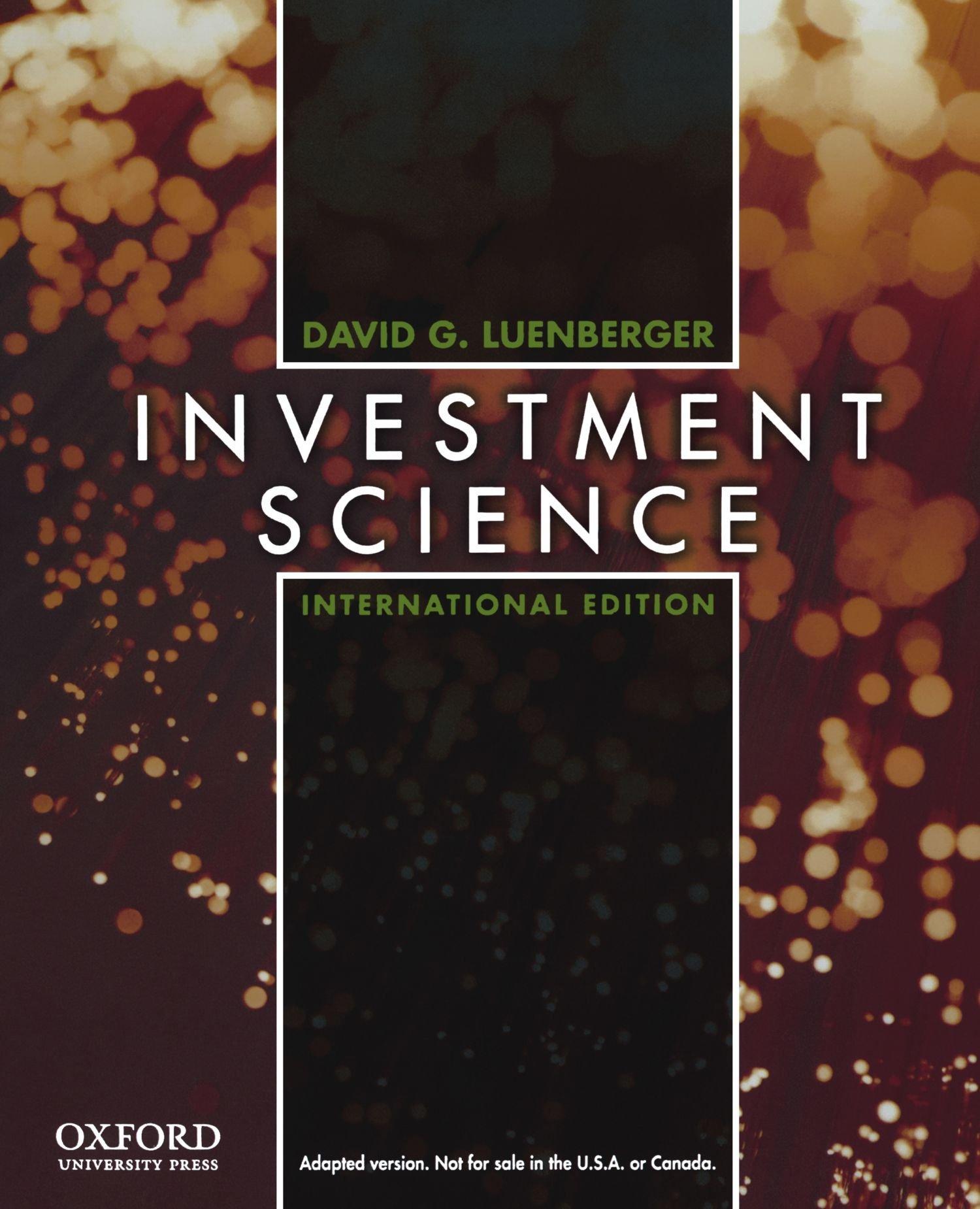Question
assume today is 15 Feb 2017 and make appropriate estimation using this assumption. Current (annualised) US Treasury spot rates are as follows: 6 months 1
assume today is 15 Feb 2017 and make appropriate estimation using this assumption.
- Current (annualised) US Treasury spot rates are as follows:
| 6 months | 1 year | 18 months | 2 year |
| 0.4% | 0.5% | 0.6% | 0.7% |
Assuming that Z-spread is equal to 85 basis points, calculate the bonds arbitrage free price. Show calculations. (3 marks)
- If the bond is bought today at the arbitrage-free price and sold on 15 Feb 2018 at $103.70, what will be realised rate of return on bond, if no reinvestment of coupons is assumed. Show calculations. (3 marks)
- From the US treasury spot rates above and assuming Z-spread of 85 basis points, calculate appropriate discount rates (implied spot rates) for this bonds cash flows. Show calculations. (3 marks)
- Using bond-specific spot rates you calculated in Question 5, derive six-monthly forward rates, including six- months forward rate 6 month from now - 0.5f0.5, six-month forward rate 12 months from now - 1f0.5, and six-months forward rate 18 months from now - 1.5f0.5 for the bond. Show calculations. (4.5 marks)
- Estimate the bonds arbitrage free price using forward rates calculated in question 6 (2 marks) and comment on comparability of spot rate and forward rate pricing (2 marks). Show calculations.
- There is another General Electrics Co. 2.5 year semi-annual 2% coupon paying bond in the market priced at $100.8. Using bond-specific spot rates as calculated in Question 5 (for 0.5 year, 1 year, 1.5 year and 2 years), bootstrap 2.5-year spot rate for the bond. Show calculations. (3 marks)
- Estimate the original bonds (displayed in Figure 1) Macaulay Duration and Convexity (YTM is as in Q2, valuation date is 15 Feb 17). Show calculations. (6 marks)
Hint: for semiannual coupon paying bonds you will be using the semiannual cash flows, yields and periods as inputs for your calculation of the Macaulay Duration and Convexity. You will need to convert the output of your calculations into the annualised (standard) form. To do that you should divide Macaulay Duration and Convexity based on the semiannual periods by 2 and 4 respectively to arrive with the final answer.
- Estimate the original bonds (displayed in Figure 1) Approximate Modified Duration and Approximate Convexity by applying 10bp interest rate shock to annualised yield to maturity (YTM is as in Q2, valuation date is 15 Feb 17). Show calculations. (4 marks)
- Assume the following interest rate tree (5 marks):
| 2.90% | |||
| 2.23% | |||
| 1.68% | 2.15% | ||
| 1.25% | 1.65% | ||
| 1.25% | 1.59% | ||
| 1.22% | |||
| 1.18% | |||
| Current 6-month rate | 6 months | 12 months | 18 months |
- Calculate value of the (option-free) bond using binomial model.
- Assume the bond is putable on 15 Feb 2018 and 15 Aug 2018 at $102.00, calculate the value of the bond.
- Calculate value of the put option and comment on who bears the cost of the put option.
Step by Step Solution
There are 3 Steps involved in it
Step: 1

Get Instant Access to Expert-Tailored Solutions
See step-by-step solutions with expert insights and AI powered tools for academic success
Step: 2

Step: 3

Ace Your Homework with AI
Get the answers you need in no time with our AI-driven, step-by-step assistance
Get Started


